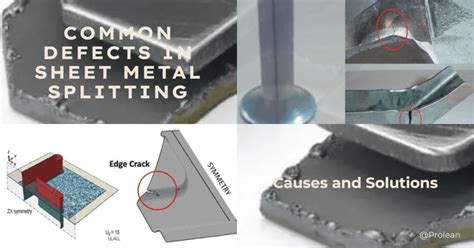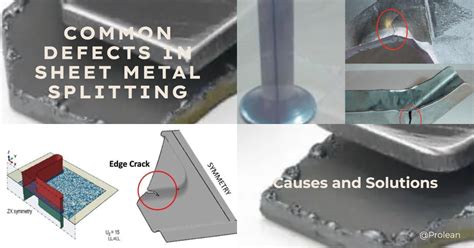defects in sheet metal forming process In this work, the federated learning methodology is applied to predict defects in sheet metal forming processes exposed to sources of scatter in the material properties and process. I recently saw some vids on the new 2012 150 and how its so aerodynamic and has this fully boxed frame concept. How far back did they make 150's with fully boxed frames? Also, what are the pros and cons of said frame?
0 · wrinkle defect in sheet metal
1 · types of sheet metal defects
2 · steel lamination defect pictures
3 · sheet metal rolling defects
4 · sheet metal defects pdf
5 · scoring marks in sheet metal
6 · defects in sheet metal operation
7 · defects in sheet metal forming
The purpose of electrical boxes. Wiring connections—where wires join an outlet, switch or other wires—must be inside an electrical box. Here’s why: Connections are the weak link in an electrical system. If they get damaged, loosened or pulled apart, you’re left without power, or worse, with a fire. Electrical boxes are simply meant to .
wrinkle defect in sheet metal
2. Bending Defects: Springback, Wrinkling, and Cracking Defects and Causes. Springback: The elastic recovery of metal after bending, leading to inaccurate angles. Wrinkling: Excessive compression on the inner bend radius due to inadequate die design or force application. .In this paper, an approximation model technique based on Gaussian process regression(GPR) is proposed to predict the forming defects in sheet metal forming process. Finite element .
types of sheet metal defects
In this work, the federated learning methodology is applied to predict defects in sheet metal forming processes exposed to sources of scatter in the material properties and process.
In this paper, an overview on the failure models for SMF processes, including typical necking-related FLD and DFC, as well as the link between FLD and DFC is illustrated in order to accumulate the knowledge and .
Incorrect process or number of forming tools; Incorrect blank shape and/or size; Excessive thinning/thickening of the sheet during forming; Wrinkles, splits, and springback are the three most common defects encountered during sheet .
Predicting defects is a challenge in many processing steps during manufacturing because there is a great number of variables involved in the process. In this paper, we take a .
This paper presents an approach, based on machine learning techniques, to predict the occurrence of defects in sheet metal forming processes, exposed to sources of scatter in the material properties and process parameters. Defects such as wrinkling, tearing, springback, local necking and buckling in regions of compressive stresses have been analysed using both experimental and simulation techniques.
The common causes of these sheet metal defects are dull or worn cutting blades, and improper cutting angles, cutting force imbalance. Sheet Metal Bending Defects “Springback” is .
steel lamination defect pictures
2. Bending Defects: Springback, Wrinkling, and Cracking Defects and Causes. Springback: The elastic recovery of metal after bending, leading to inaccurate angles. Wrinkling: Excessive compression on the inner bend radius due to inadequate die design or force application. Cracking: Fractures along the outer bend radius caused by insufficient material ductility or a sharp bend .In this paper, an approximation model technique based on Gaussian process regression(GPR) is proposed to predict the forming defects in sheet metal forming process. Finite element analysis is applied to simulate the drawing process. Sheet metal defects affect the appearance, function or structural integrity of the sheet metal. Learn the defects and avoid them in the sheet metal process. In this work, the federated learning methodology is applied to predict defects in sheet metal forming processes exposed to sources of scatter in the material properties and process.

In this paper, an overview on the failure models for SMF processes, including typical necking-related FLD and DFC, as well as the link between FLD and DFC is illustrated in order to accumulate the knowledge and provide the guidance for failure prediction in industry.Incorrect process or number of forming tools; Incorrect blank shape and/or size; Excessive thinning/thickening of the sheet during forming; Wrinkles, splits, and springback are the three most common defects encountered during sheet metal stamping. Wrinkles Predicting defects is a challenge in many processing steps during manufacturing because there is a great number of variables involved in the process. In this paper, we take a machine learning perspective to choose the best model for defects prediction of sheet metal forming processes.
This paper presents an approach, based on machine learning techniques, to predict the occurrence of defects in sheet metal forming processes, exposed to sources of scatter in the material properties and process parameters.
Defects such as wrinkling, tearing, springback, local necking and buckling in regions of compressive stresses have been analysed using both experimental and simulation techniques.
The common causes of these sheet metal defects are dull or worn cutting blades, and improper cutting angles, cutting force imbalance. Sheet Metal Bending Defects “Springback” is one of the key bending defects, also associated with stamping and other forming processes. Metal sheet tends to regain their original position after deformation .2. Bending Defects: Springback, Wrinkling, and Cracking Defects and Causes. Springback: The elastic recovery of metal after bending, leading to inaccurate angles. Wrinkling: Excessive compression on the inner bend radius due to inadequate die design or force application. Cracking: Fractures along the outer bend radius caused by insufficient material ductility or a sharp bend .In this paper, an approximation model technique based on Gaussian process regression(GPR) is proposed to predict the forming defects in sheet metal forming process. Finite element analysis is applied to simulate the drawing process. Sheet metal defects affect the appearance, function or structural integrity of the sheet metal. Learn the defects and avoid them in the sheet metal process.
In this work, the federated learning methodology is applied to predict defects in sheet metal forming processes exposed to sources of scatter in the material properties and process. In this paper, an overview on the failure models for SMF processes, including typical necking-related FLD and DFC, as well as the link between FLD and DFC is illustrated in order to accumulate the knowledge and provide the guidance for failure prediction in industry.
Incorrect process or number of forming tools; Incorrect blank shape and/or size; Excessive thinning/thickening of the sheet during forming; Wrinkles, splits, and springback are the three most common defects encountered during sheet metal stamping. Wrinkles Predicting defects is a challenge in many processing steps during manufacturing because there is a great number of variables involved in the process. In this paper, we take a machine learning perspective to choose the best model for defects prediction of sheet metal forming processes. This paper presents an approach, based on machine learning techniques, to predict the occurrence of defects in sheet metal forming processes, exposed to sources of scatter in the material properties and process parameters. Defects such as wrinkling, tearing, springback, local necking and buckling in regions of compressive stresses have been analysed using both experimental and simulation techniques.
laser etching for metal fabrication

sheet metal rolling defects
sheet metal defects pdf
scoring marks in sheet metal
Power Tech’s Temporary Power Distribution Box is used by contractors on jobsites (indoor or outdoor) to provide and distribute power from temporary power poles or jobsite generators. Our box is ETL approved for indoor and outdoor use. All outlets have circuit breaker overload protection and all U-Ground outlets are GFCI protected.
defects in sheet metal forming process|types of sheet metal defects